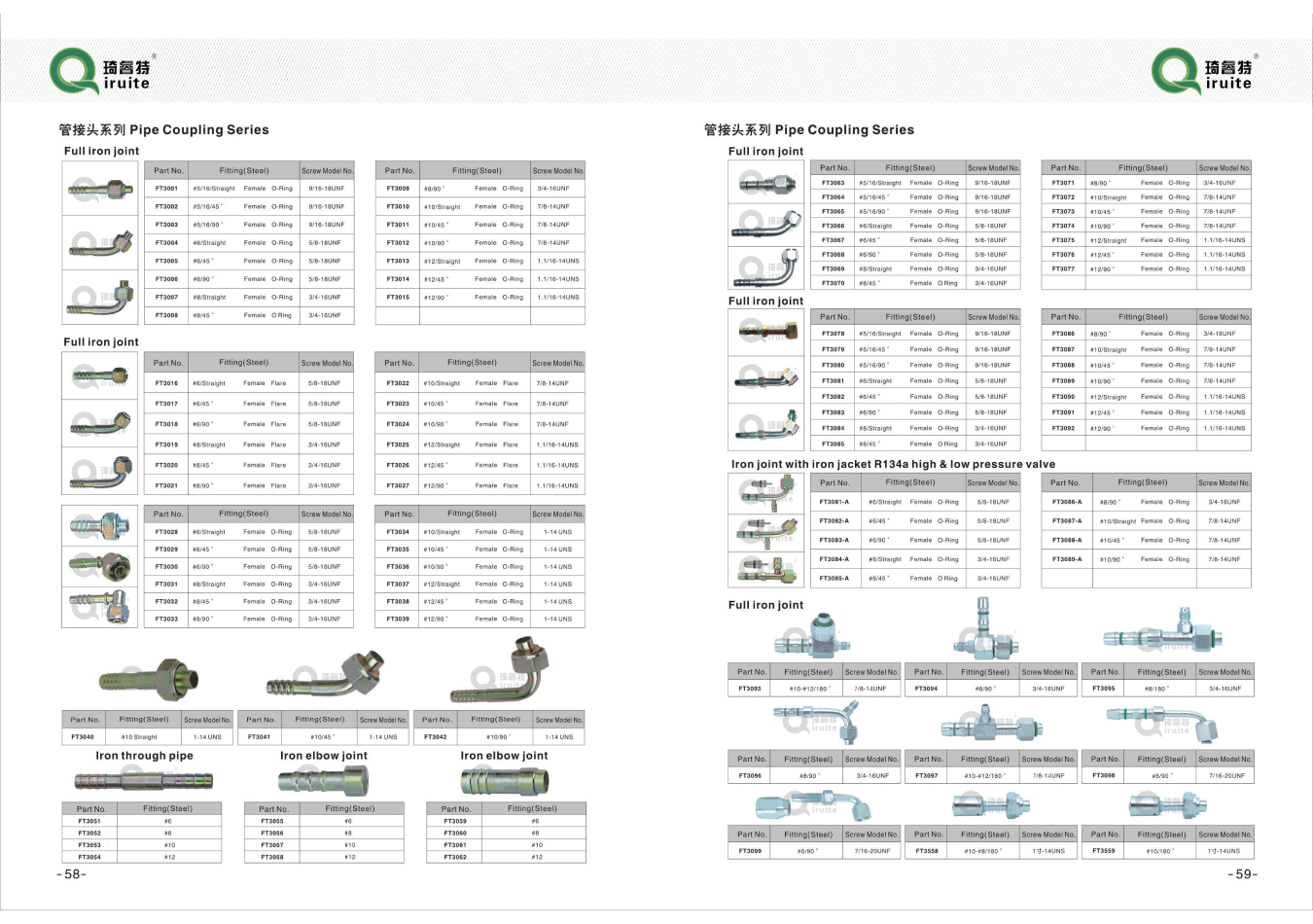R134A Refrigerant Charging Hose for Efficient HVAC Maintenance and Repair
Understanding R134a Refrigerant Recharge Hoses
Refrigeration systems are integral to various industries and residential spaces, providing cooling solutions that enhance comfort and preserve perishable goods. One critical element within these systems is the refrigerant, a substance used for heat transfer. R134a, a hydrofluorocarbon, has been widely utilized in automotive and domestic refrigeration systems due to its efficiency and relatively low environmental impact compared to older refrigerants. Understanding the recharge process for R134a, particularly through the use of recharge hoses, is essential for proper maintenance and functionality.
What is R134a?
R134a (tetrafluoroethane) is a colorless, odorless gas that has gained prominence as a refrigerant due to its excellent thermal properties and lower ozone depletion potential. It is non-flammable and non-toxic, making it suitable for various applications, especially in cars manufactured after the 1990s. Importantly, R134a does not contribute to ozone layer depletion, which was a significant drawback of its predecessor, R12.
The Importance of Recharge Hoses
To maintain optimal performance of an R134a-based refrigeration system, periodic recharging is often necessary. Over time, refrigerants can leak from the system due to wear and tear, resulting in decreased efficiency. This is where recharge hoses come into play. These specialized hoses are designed to facilitate the transfer of refrigerant into the system, ensuring it operates effectively.
Recharge hoses typically come equipped with various components that make the refilling process straightforward. They usually feature color-coded fittings the blue fitting for low pressure and the red for high pressure. This visual distinction helps in preventing mistakes during the recharge process.
Components of Recharge Hoses
A standard R134a refrigerant recharge hose consists of several key components
1. Hose Made from durable materials, the hose is designed to withstand the pressures involved in refrigerant transfer. 2. Fittings These are designed to securely connect to the service ports of the refrigeration system and are color-coded for easy identification.
3. Pressure Gauge Most recharge hoses come with an integrated gauge that displays the pressure of the refrigerant in the system. This helps technicians determine whether the system is under- or overcharged.
r134a refrigerant recharge hose

5. Can Tap If you are using refrigerant cans, a can tap enables the connection between the hose and the refrigerant canister.
Steps for Using R134a Recharge Hoses
When recharging an R134a system, the following steps should be followed to ensure a safe and effective process
1. Preparation Before beginning, make sure you have the right tools, including gloves and safety goggles. Ensure the environment is well-ventilated.
2. Connect the Hose Attach the blue fitting to the low-pressure service port and the red fitting to the high-pressure port, ensuring they are secure.
3. Check the Pressure Use the pressure gauge to check the current pressure in the system. This is crucial for determining how much refrigerant is needed.
4. Recharge the System If the system is low on refrigerant, open the valve on the canister and allow the refrigerant to flow into the system. Monitor the pressure gauge continuously to avoid overcharging.
5. Disconnect and Test Once the desired pressure is reached, close the valve, disconnect the hoses, and double-check for any leaks. After recharging, test the system to confirm it's functioning properly.
Safety Considerations
Handling refrigerants can be hazardous if proper precautions are not taken. Always wear protective gear, work in a well-ventilated area, and avoid any inhalation of refrigerant gases. In case of exposure, seek fresh air immediately and consult a medical professional if symptoms persist.
Conclusion
In summary, understanding R134a refrigerant recharge hoses and their proper usage is vital for maintaining efficient refrigeration systems. By ensuring that the system remains adequately charged with refrigerant, you can enhance its performance and longevity while also contributing positively to environmental conservation efforts. Whether you are a seasoned technician or a DIY enthusiast, mastering the use of recharge hoses is a valuable skill in the realm of refrigeration.
-
Ultimate Spiral Protection for Hoses & CablesNewsJun.26,2025
-
The Ultimate Quick-Connect Solutions for Every NeedNewsJun.26,2025
-
SAE J1401 Brake Hose: Reliable Choice for Safe BrakingNewsJun.26,2025
-
Reliable J2064 A/C Hoses for Real-World Cooling NeedsNewsJun.26,2025
-
Heavy-Duty Sewer Jetting Hoses Built to LastNewsJun.26,2025
-
Fix Power Steering Tube Leaks Fast – Durable & Affordable SolutionNewsJun.26,2025

